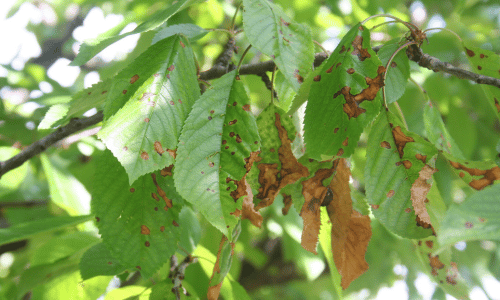Welcome to the Lone Star State, where sprawling landscapes and diverse ecosystems are adorned with magnificent trees. However, even these resilient guardians of nature are not immune to the perils of diseases and pests. As a Texas resident and tree enthusiast, it’s crucial to familiarize yourself with the identification and control of common tree diseases and pests. This knowledge will empower you to protect the health and beauty of your trees and contribute to the preservation of Texas’ natural heritage. In this blog, we will explore the prevalent tree diseases and pests in Texas, equipping you with the tools to safeguard your cherished arboreal companions.
Tree Diseases
Oak Wilt: The Silent Threat
Texas’s beloved oak trees face a formidable adversary known as Oak Wilt. This fungal disease disrupts the tree’s water-conducting vessels, leading to wilting, defoliation, and eventual death. By understanding the early symptoms, such as leaf discoloration and vein blockage, you can take proactive measures to contain its spread and protect your cherished oaks.
Fire Blight: Ravaging Flames
Imagine a devastating fire engulfing your cherished pear or apple trees. Fire Blight, caused by the bacterium Erwinia amylovora, resembles such an inferno. This rapidly spreading infection leaves a trail of blackened branches and withered fruits in its wake. Familiarize yourself with its telltale signs, including blossom blight and cankers, to mitigate its impact on your garden.
Cotton Root Rot: The Silent Invader
Hiding beneath the Texas soil, Cotton Root Rot poses a silent menace to various plant species, including trees. This soilborne fungal disease attacks the roots, causing stunted growth, yellowing leaves, and wilting. Understanding its life cycle and implementing appropriate management strategies can help protect your valuable trees from succumbing to its sinister influence.
Tree Pests
Emerald Ash Borer: A Green Threat
Originally from Asia, the Emerald Ash Borer has found its way to Texas, posing a severe threat to ash trees. The larvae tunnel beneath the bark, disrupting the tree’s nutrient flow and ultimately leading to its demise. By remaining vigilant and identifying early signs such as characteristic “D”-shaped exit holes and serpentine galleries, you can explore effective treatment options.
Texas Root Rot: A Graveyard for Trees
True to its name, Texas Root Rot haunts trees in arid regions, attacking their root systems and causing irreversible damage. This soilborne fungus thrives in dry conditions. Implementing proper soil moisture management, promoting good drainage, and utilizing fungicidal treatments can help curb its impact on your trees.
Bagworms: Stealthy Leaf Conquerors
Imagine a tree adorned with small, cone-shaped bags hanging from its branches. This is the work of Bagworms, moth larvae that defoliate trees by consuming their leaves. Early identification and integrated pest management techniques, such as handpicking or using biological control agents, can help restore your tree’s vitality.
Effective Control Measures
Early Detection and Vigilance
Early detection and regular monitoring are critical in the realm of tree diseases and pests. By conducting regular inspections and remaining vigilant, you can identify symptoms at their onset, allowing for prompt action and prevention of further damage.
Integrated Pest Management
Implementing Integrated Pest Management (IPM) practices offers a holistic and environmentally friendly approach to tree care. By emphasizing prevention and utilizing techniques like biological control, cultural control, and chemical control as a last resort, you can effectively manage tree diseases and pests while minimizing harm to the ecosystem.
Seeking Professional Assistance
While you may possess a wealth of knowledge and passion for your trees, it’s essential to recognize the value of professional tree care services. Consulting with arborists and tree care specialists can provide expert guidance, accurate diagnoses, and tailored solutions to combat the specific threats your Texas trees face.
Conclusion
As a Texas resident, the protection of your trees plays a vital role in maintaining the beauty and health of your surroundings. By understanding and addressing common tree diseases and pests, you can actively contribute to the well-being of your arboreal companions. Remember, early detection, integrated pest management, and seeking professional assistance when needed will ensure the resilience and longevity of your cherished Texas trees.

